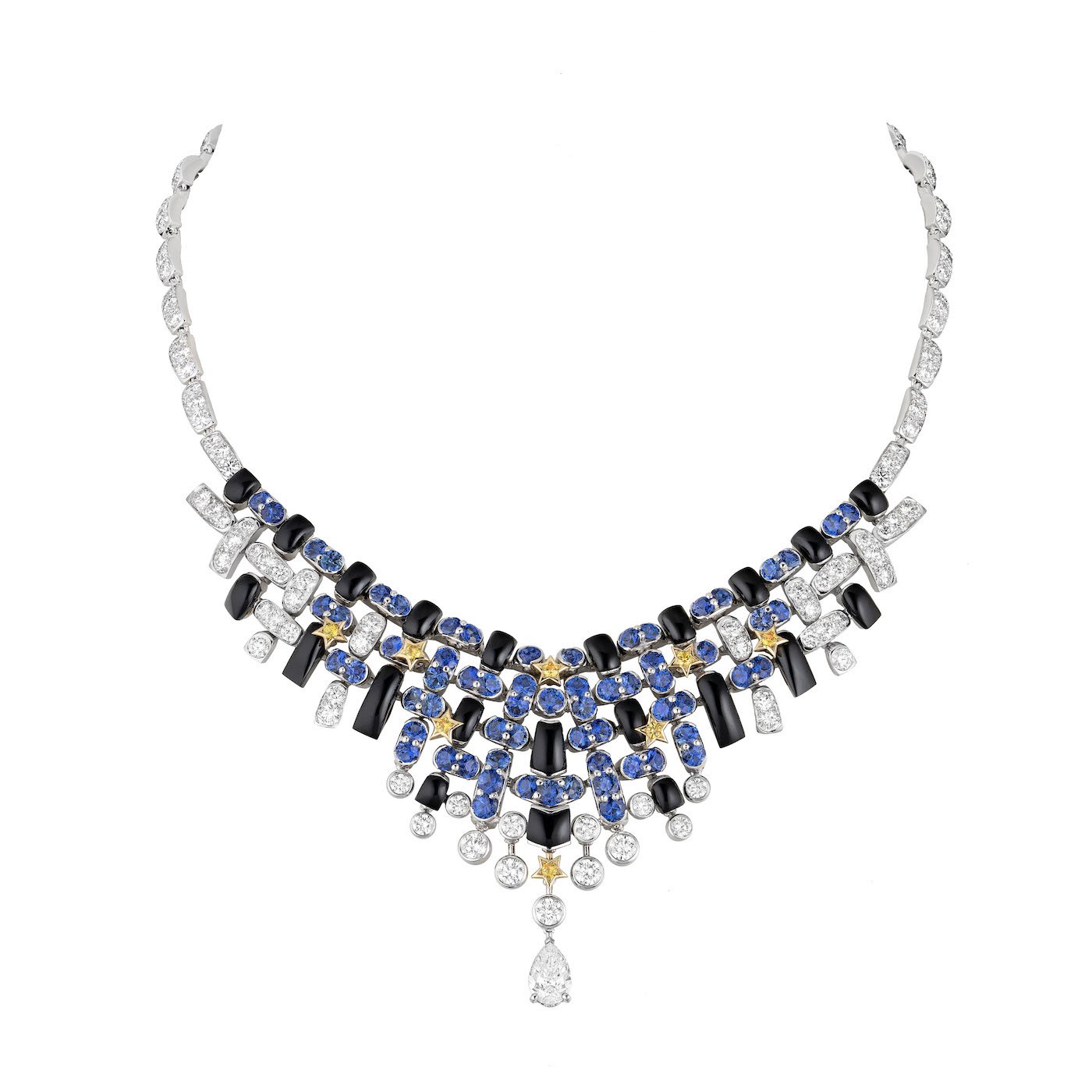abrielle Chanel first came to Scotland in the 1920s, drawn not by the beauty of its rugged landscapes, and certainly not its unpredictable climate, but by her love affair with the Duke of Westminster, whom she met in 1924 in Monte-Carlo. The couple spent weekends holed up at the now abandoned Rosehall Estate in the Highlands. Looking for a way to stay warm in the biting winds, Mademoiselle, as she was known, borrowed her aristocratic lover’s tweed jackets. She would be the first to introduce this twill fabric to haute couture.
Tweed takes its name from the River Tweed, which flows through Scotland’s Border region. It was first worn by farmers in search of a hard-wearing fabric that would keep the cold and damp at bay. Later, in the nineteenth century, the English upper classes developed a taste for the Scottish countryside, where they could indulge their love of hunting and fishing, and adopted tweed for themselves.
-

- The Tweed Royal necklace, the centrepiece of the collection, is woven from yellow gold and trimmed with a chain.
Patrice Leguéreau, director of Chanel’s Fine Jewellery Creation Studio, took inspiration from tweed in 2020 for a first high jewellery collection, “Le Tweed de Chanel”, comprising 45 pieces. This second chapter is composed of 63 high jewellery pieces. He explains how “for this new high jewellery collection, I wanted to go further with this interpretation of tweed by creating a veritable fabric of precious stones that would be light and supple. It was my dream to create tweed set with precious stones.”
The studio’s director was inspired by five objects that were important to Gabrielle Chanel. First, the white ribbon which is woven into the tweed. At embroidery specialist Lesage, tweeds are woven row by row on looms, incorporating lace or silk ribbon among the woollen thread to produce a more than precious fabric.
The second theme is the pink camellia, one of the couturière’s favourite flowers. Next is the comet against a blue background, a yellow sun and, lastly, the lion (born on August 19th, 1883, Mademoiselle was a Leo), set against a palette of fiery red. Patrice Leguéreau called on gold, platinum, pearls, precious stones and rock crystal to transform his vision into reality.
The most remarkable aspect of the collection is the way in which Chanel’s jewellers have recreated the fabric’s warp and weft. Tweed’s supple texture and multiple patterns are rendered through intricate weavings of gold and platinum threads and through deft openwork. The centrepiece of the collection, the Tweed Royal necklace looks for all the world like a piece of tweed; a precious trompe l’oeil of yellow gold links, set with diamonds and rubies then finished with a gold chain.
This stunning necklace was already sold when the collection was unveiled to the press. Were we envious? A little. Relieved? Yes: because as long as there are collectors capable of appreciating such a level of expertise, and with the necessary means, we can rest assured that the art of jewellery will continue to exist.


























































